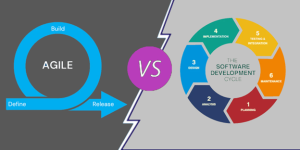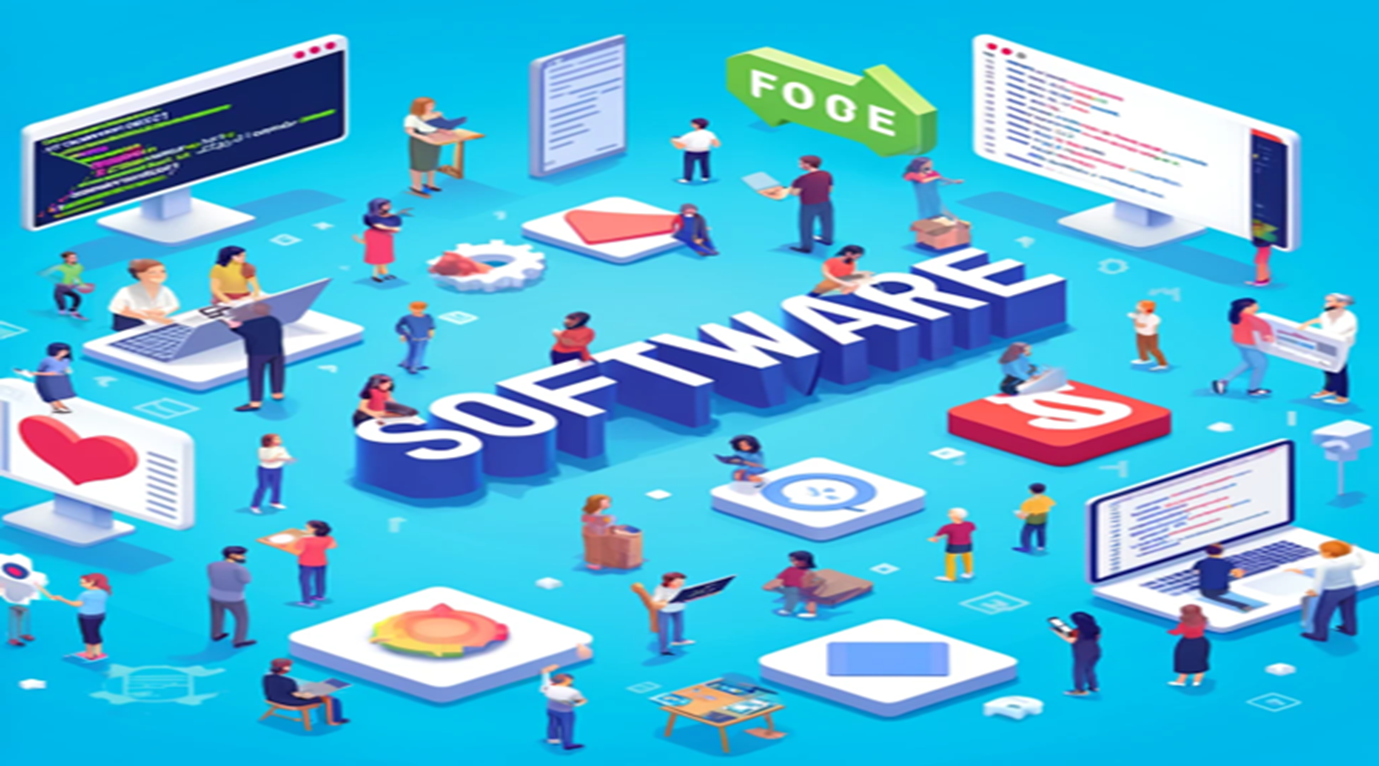Introduction
The world of software development is a whirlwind of innovation. Software development life cycle (SDLC) methodologies have continuously evolved to keep pace with the ever-changing tech landscape.
The rise of agile methodologies in recent years has challenged the traditional, linear approach to SDLC. Australian tech companies, at the forefront of innovation, are embracing Agile practices to deliver high-quality software faster. However, adapting traditional SDLC to Agile methodologies in the Australian context presents unique challenges and opportunities.
This blog post dives into these complexities, equipping Australian tech leaders with valuable insights to optimize their Agile SDLC practices.
Traditional vs. Agile Sprints: A Tale of Two Methodologies
Before we delve into the Australian landscape, let’s establish a clear understanding of the two primary approaches to SDLC.
- Traditional SDLC: This linear approach follows a series of well-defined phases, progressing from planning and requirements gathering to design, development, testing, deployment, and maintenance. Each phase is completed sequentially before moving on to the next. While this structured approach offers predictability and control, it can be slow to adapt to changing requirements in today’s dynamic tech environment.
- Agile Methodologies: Agile methodologies prioritize flexibility and rapid iteration. Projects are broken down into smaller, manageable units called sprints. Each sprint focuses on a specific set of features, with continuous testing, feedback, and adaptation integrated throughout the development process. This iterative approach allows for faster delivery and better alignment with evolving needs.

Traditional vs. Agile SDLC
While traditional SDLC offers a structured approach, Agile methodologies provide greater adaptability and faster time-to-market, making them a better fit for the fast-paced tech industry. However, Australian Agile teams face distinct challenges that require a nuanced approach to software development life cycle adaptation.
Down Under Development: Challenges Faced by Agile Teams
The Australian tech industry thrives on innovation, but its unique geographical and regulatory landscape presents hurdles for Agile teams. Here are some key challenges to consider:
- Remote Team Dynamics: Australian teams often collaborate with geographically dispersed teams, necessitating effective communication strategies. Time zone differences can disrupt workflows and hinder real-time collaboration during daily stand-up meetings or sprint planning sessions.
- Global Project Management: Managing projects with clients or team members in different time zones requires meticulous planning and scheduling. Agile practices like daily stand-ups or sprint reviews need to be adapted to accommodate these time zone disparities.
- Australian Data Protection Laws: Australia has strict data protection laws (Privacy Act 1988) that Agile teams must adhere to. Security measures and data handling protocols need to be integrated seamlessly into the software development life cycle to ensure compliance.
For instance, an Australian software development company collaborating with a team in the United States might face challenges in conducting daily stand-up meetings due to a 7-8 hour time zone difference. This could disrupt the team’s workflow and hinder real-time communication.
“The key to overcoming geographical and regulatory hurdles in Agile teams lies in fostering a culture of transparency, clear communication, and robust documentation,” says Dr. Amelia Jackson, a leading Agile software development expert at the University of Melbourne.
By acknowledging these challenges and implementing effective strategies, Australian Agile teams can navigate the complexities of the software development life cycle and achieve optimal outcomes.
Bridging the Gap: Integrating DevOps into the Agile SDLC
The fast-paced nature of Agile development necessitates streamlined communication and collaboration between development (Dev) and operations (Ops) teams. This is where DevOps comes in. DevOps is a set of practices that promotes collaboration and integration between development, testing, security, and IT operations. By breaking down silos and fostering a culture of shared responsibility, DevOps enhances the overall software development life cycle for Agile teams.
Here’s how DevOps practices can benefit Agile teams in Australia:
- Streamlined Operations: DevOps automates repetitive tasks such as testing, deployment, and infrastructure provisioning. This frees up valuable developer time for core functionalities and innovation.
- Improved Deployment Times: DevOps promotes continuous integration and continuous delivery (CI/CD) practices. This allows for faster and more frequent deployments, enabling Agile teams to respond quickly to changing market demands.
- Enhanced Collaboration: DevOps fosters a culture of collaboration between Dev and Ops teams. This improves communication, reduces friction, and leads to a more efficient software development life cycle.
Automating Efficiency: Leveraging Testing Tools in Agile Development
Agile methodologies thrive on continuous iteration and rapid feedback. Software development life cycle (SDLC) testing plays a crucial role in ensuring software quality throughout the development process.
However, manual testing in Agile environments can be time-consuming and hinder development velocity. This is where automated testing tools come to the rescue.
Why Automate Testing in Agile Environments?
- Speed and Efficiency: Automated testing tools can execute many test cases quickly and efficiently, freeing up valuable developer time for core functionalities.
- Improved Quality: Automation ensures consistent and repeatable testing, reducing the likelihood of human error and improving overall software quality.
- Faster Feedback: Automated testing tools provide immediate feedback on test results, enabling developers to identify and fix bugs early in the development cycle.
Popular Automated Testing Tools for Agile Teams
Several automated testing tools cater specifically to the needs of Agile teams. Here are a few noteworthy options:
- JUnit (Java): A popular unit testing framework for Java applications, allowing developers to write unit tests that focus on individual units of code.
- Selenium: An open-source web automation framework that enables testing of web applications across different browsers and operating systems.
- Appium: An open-source framework for automating mobile app testing, allowing for testing on various mobile devices and platforms.
- Katalon Studio: A comprehensive automation testing platform that supports various testing types, including web, mobile, API, and desktop applications.
- Cucumber: A behavior-driven development (BDD) framework that allows writing test cases in a human-readable format, promoting better collaboration between developers and testers.
By strategically integrating automated testing tools into their software development life cycle, Australian Agile teams can achieve faster feedback loops, improved software quality, and ultimately, deliver a superior product to market.
Supercharge your Agile development with Neuronimbus automated testing solutions.
Let’s Talk
Unveiling Opportunities: Optimizing the SDLC for Agile Teams
The Australian software development industry is a breeding ground for innovation. By embracing Agile methodologies and integrating best practices, Australian companies can unlock a plethora of opportunities to optimize their software development life cycle (SDLC). Here are some key areas to consider:
- Harnessing Local Tech Advancements: Australia boasts a thriving tech scene with a strong focus on research and development. Agile teams can leverage locally developed solutions to streamline their SDLC.
- Embracing Cloud-Based Technologies: Cloud computing offers scalability, flexibility, and cost-efficiency – perfect for Agile development. Australian teams can leverage cloud platforms like Amazon Web Services (AWS) or Microsoft Azure to deploy and manage their applications efficiently.
- Investing in Continuous Learning: The tech landscape is constantly evolving. Australian companies must prioritize continuous learning and skills development for their Agile teams. This could involve training on new technologies, best practices in Agile methodologies, and the latest automated testing tools.
- Future-Proofing with AI and Machine Learning: Artificial intelligence (AI) and machine learning (ML) hold immense potential for further optimizing the SDLC. Imagine AI-powered tools that can automate software testing tasks with even greater precision or ML algorithms that predict and prevent potential bugs in the code. By staying ahead of the curve and exploring these emerging technologies, Australian Agile teams can gain a significant competitive edge.
Data and Statistics:
A study by McKinsey & Company revealed that Australian companies with a strong focus on digital innovation outperform their less innovative counterparts by a staggering 28% in terms of revenue growth. This highlights the importance of continuous improvement and adaptation within the software development life cycle.
Conclusion
As Australian tech leaders, the time is ripe to embrace change and propel your Agile teams towards success. By adapting traditional SDLC models to Agile methodologies, integrating DevOps practices, and harnessing the power of automation, you can usher in a new era of efficiency and innovation.
Remember, the software development life cycle is a continuous journey of improvement. By staying at the forefront of innovation and adopting best practices, you can navigate the complexities of the Australian tech landscape with confidence.
And if you’re looking for a trusted partner to guide you through this journey, consider Neuronimbus. With our expertise in Agile methodologies and cutting-edge solutions, we can help you optimize your software development life cycle and propel your business to the forefront of the Australian tech industry.
Don’t wait any longer. Start your journey towards success with Neuronimbus today!




